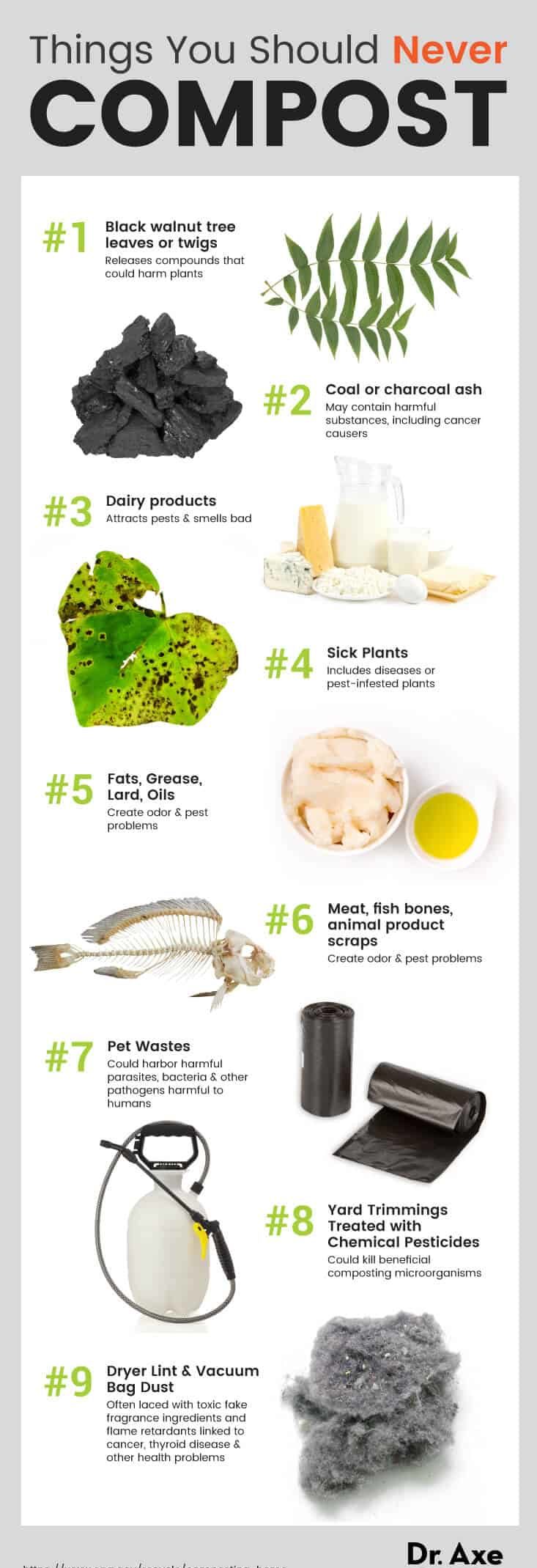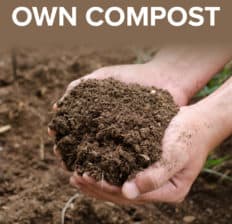This Dr. Axe content is medically reviewed or fact checked to ensure factually accurate information.
With strict editorial sourcing guidelines, we only link to academic research institutions, reputable media sites and, when research is available, medically peer-reviewed studies. Note that the numbers in parentheses (1, 2, etc.) are clickable links to these studies.
The information in our articles is NOT intended to replace a one-on-one relationship with a qualified health care professional and is not intended as medical advice.
This article is based on scientific evidence, written by experts and fact checked by our trained editorial staff. Note that the numbers in parentheses (1, 2, etc.) are clickable links to medically peer-reviewed studies.
Our team includes licensed nutritionists and dietitians, certified health education specialists, as well as certified strength and conditioning specialists, personal trainers and corrective exercise specialists. Our team aims to be not only thorough with its research, but also objective and unbiased.
The information in our articles is NOT intended to replace a one-on-one relationship with a qualified health care professional and is not intended as medical advice.
DIY Compost: Simple Steps to Make ‘Black Gold’ at Home
April 10, 2023

DIY compost may seem intimidating at first, but it’s really not much different than baking a cake when you think about it. You just need specific amounts of certain ingredients and a set of directions.
For DIY compost, add browns, greens and a little moisture; follow some simple rules; and you’ve got “black gold” for all of your home landscaping needs. Just like baking, it can be as simple — or complicated — as you’d like.
Here, we’re going to cover the basics of simple DIY compost to help keep food waste out of landfills while creating an amazing soil amendment.
Why is this so important? Today, many companies are actually taking biosolids from wastewater treatment plants, bagging them and selling the mixture as “organic” compost. Trouble is this human sewage sludge in compost contains more than natural fertilizer.
Growing food in it could cause shampoo chemicals to wind up in your garden crops. Gross!
Heavy metals and pathogens are also of concern. Taking home composting into your own hands is a great way to keep toxic chemicals out of your yard.
DIY Compost: Top Benefits of Composting
What is compost anyway? Broadly, any organic matter will eventually break down, but composting increases the breakdown speed.
How? As the United States Department of Agriculture points out, effective composting creates the ideal environment for bacteria and other decomposing microorganisms.
When done correctly, the finished product looks and feels like “fertile garden soil” and can help the soil thrive, weather for flowers, plants or a victory garden. Many describe it as dark, crumbly and earthy smelling.
Decomposing organisms consist of:
- Bacteria
- Fungi
- Worms
- Sow bugs
- Nematodes
- Others
The four key factors for thriving DIY compost include:
- Nitrogen
- Carbon
- Moisture
- Oxygen
In a way, a compost pile reminds me of the human gut, teeming with organisms. Think of compost as “probiotics” for the soil, adding and nourishing microorganisms and nutrients that can create healthier grass, trees, plants and garden crops.
In fact, eating dirt or, rather, avoiding over-sanitizing food can actually help you sneak some soil-based organisms that benefit humans into the diet, too.
But back to home compost…
There are lots of benefits of creating DIY compost. Here are a few:
- Enriches soil, helping retain moisture and suppress plant diseases and pests.
- Help plants retain more moisture during periods of drought, which is becoming more common with climate change.
- Reduces the need for chemical fertilizers.
- Increase soil structure to help prevent erosion and is a big part of regenerative agriculture.
- Encourages the production of beneficial bacteria and fungi that break down organic matter to create humus, a rich, nutrient-filled material.
- Reduces methane emissions from landfills and lowers your carbon footprint.
- Provides a free garden and lawn amendment.
DIY Composting Essentials
Again, composting can be as simple as baking a cake. I like to keep it basic with backyard composting, keeping animal waste out of the equation. (On farms, truly safe and high-quality compost is monitored regularly to make sure it reaches high enough temperatures to kill pathogens in animal manure.)
For the purposes of this article, we’re focusing on non-manure household waste like lawn and food scraps.
The Environmental Protection Agency says these are the most important tips for creating a compost pile or a compost bin:
- Select a dry, shady spot near a water source for your compost pile or bin.
- Add brown and green materials as they’re collected, making sure larger pieces are chopped or shredded, such as garlic peels and onion skins.
- Moisten dry materials as they’re added.
- Once your compost pile is established, mix grass clippings and green waste into the pile, and bury fruit and vegetable waste under 10 inches of compost material.
- It’s optional, but some people choose to cover the top of compost with a tarp to keep it moist. When the material at the bottom is dark and rich in color, your compost is ready to use. This usually takes anywhere between two months to two years.

Common nitrogen-rich essentials for compost include:
- Grass clippings
- Fruit and vegetable scraps
- Coffee grounds
- Tea leaves
Common carbon-rich essentials for compost include:
- Dried leaves
- Chopped up corn cobs
- Ripped up cardboard (best if ink-free and untreated)
Things like sawdust and wood pellets tend to be very high in carbon, so you should generally avoid them.
When you really think about it, composting can be boiled down to these three basic points, according to the Planet Natural Resource Center:
- Buy or build the right container.
- Get the mix right when it comes to ingredients. Too much nitrogen inputs or carbon inputs create an imbalanced compost pile.
- Adhere to a few simple rules. Turn your compost pile every week or two, and keep it moist but not too moist!
Slow or Cold Composting vs. Hot Composting
The USDA points out there is a difference between a “hot” or “cold” compost pile.
Cold Compost Pile or Compost Bin
- Perfect for people who don’t have a lot of time to devote to the compost.
- Requires no maintenance but takes longer to break down. (Up to a year or more.)
- Best for piling grass clippings and dry leaves.
- Must keep weeds out of this mix because it likely won’t heat up enough to kill weed seeds.
- Chopping or shredding yard waste with a mower before adding to the pile can speed up the composting process.
Hot Composting
- Requires more work, but a few minutes a day can create compost in just a few weeks.
- Best when high-carbon and high-nitrogen material are mixed in at a 1-to-1 ratio.
- A minimum compost bin or pile size is 3-feet-by-3-feet-by-3-feet.
- Choose a level, well-drained site, preferably near your garden.
- Choose a compost bin that’s right for you, or build a pile direction on the ground.
- Building an effective pile means either alternating layers of high-carbon and high-nitrogen material or mixing the two together and then adding to the pile.
- If alternating layers, make each layer 2 to 4 inches thick, the USDA stresses.
- Water periodically, but don’t saturate.
- Punch holes in the sides of the pile for aeration.
- Start turning when the pile’s internal temperature peaks at about 130 to 140 degrees Fahrenheit. (Compost thermometers are available.)
- Move materials from the center to the outside and vice versa.
Daily or three-times-a-week turning should be enough to create compost in less than a month. Turning every other week means it’ll usually take about one to three months for finished compost. Remember, compost is “done” when it smells sweet and is cool and crumbly to the touch.
Keep These Things Out of the Pile or Bin
To reduce your risk of introducing dangerous pathogens and harmful chemicals like phthalates into your pile, you’ll want to avoid tossing certain things into your compost pile.

Here are things I keep out of my home compost bin. Don’t compost these:
- Dryer lint and vacuum dust
- Pet feces
- Diseased plants
- Dairy, meat, bones and other animal products
- Grease and fat
- Coal ash or charcoal
- Trimmings from walnut trees
- Paper (Some people recommend it, but it could contain toxic printer ink chemicals, so I avoid it.)
- Any yard trimmings that could be contaminated with pesticides
Truly Organic Compost
Look outside of any home improvement or garden store in the spring and you’ll see bags of “organic compost.” Just a word of caution: Many of these products are actually human sewage sludge.
While the thought of reusing human waste as a soil amendment seems like an efficient, healthy idea on the surface, there are issues to watch out for. For instance, sludge is made from everything we flush down drains and can also include industrial or mortuary waste.
While sewage sludge, also known as biosolids, is not allowed in organic agriculture, it is allowed for use on nonorganic crops. Plants grown in sewage sludge sometimes contain levels of harmful heavy metals. Even personal care products, including shampoo chemicals, can wind up in sewage sludge-treated food.
For truly organic, basic DIY compost, stick to using plant-based materials at home. Before buying a commercial product, call the number on the bag, and ask the source of the material. Avoid any that use any biosolid ingredients or manure from concentrated animal feeding operations, aka factory farms.
Conclusion
- Composting food scraps can keep easily biodegradable waste out of our landfills while providing an organic garden amendment for your landscape needs.
- Home composting can reduce your need to purchase store-bought compost, which saves you money and protects you from biosolids, or human sewage sludge, often bagged and sold as “organic compost.”
- You can build or buy a compost bin, spinner or just simply use a compost pile.
- DIY compost at home generally takes about six months to two years to do its thing.
- Compost is as simple as creating a compost pile or a DIY compost bin and filling it with green waste, like grass clippings and food scraps, brown, carbon waste like dead leaves and branches, and a little water.
- There are certain things you should not compost. Some of these include animal products, coal ash or charcoal, dryer lint, fats and grease, and any yard trimmings treated with chemicals.




